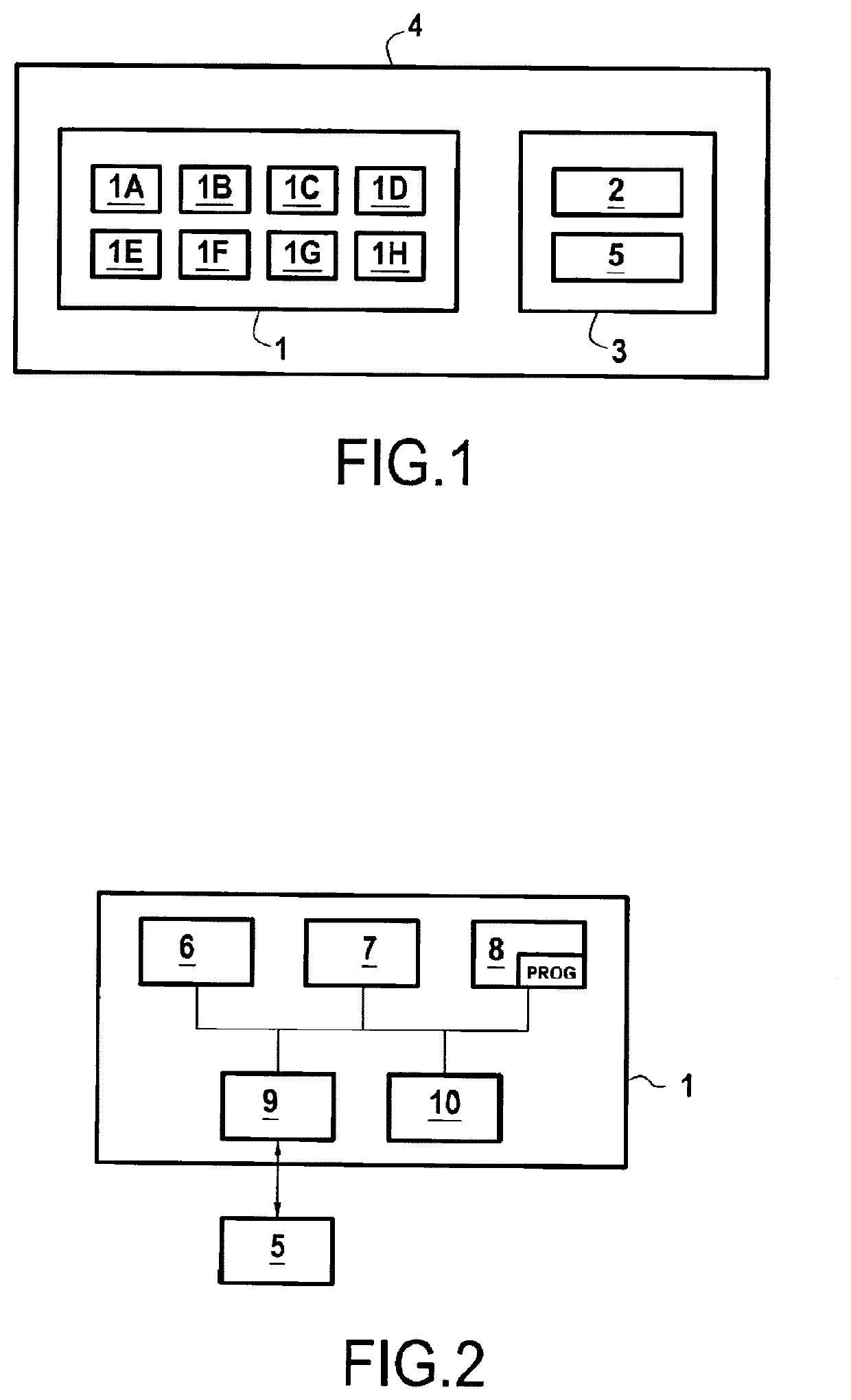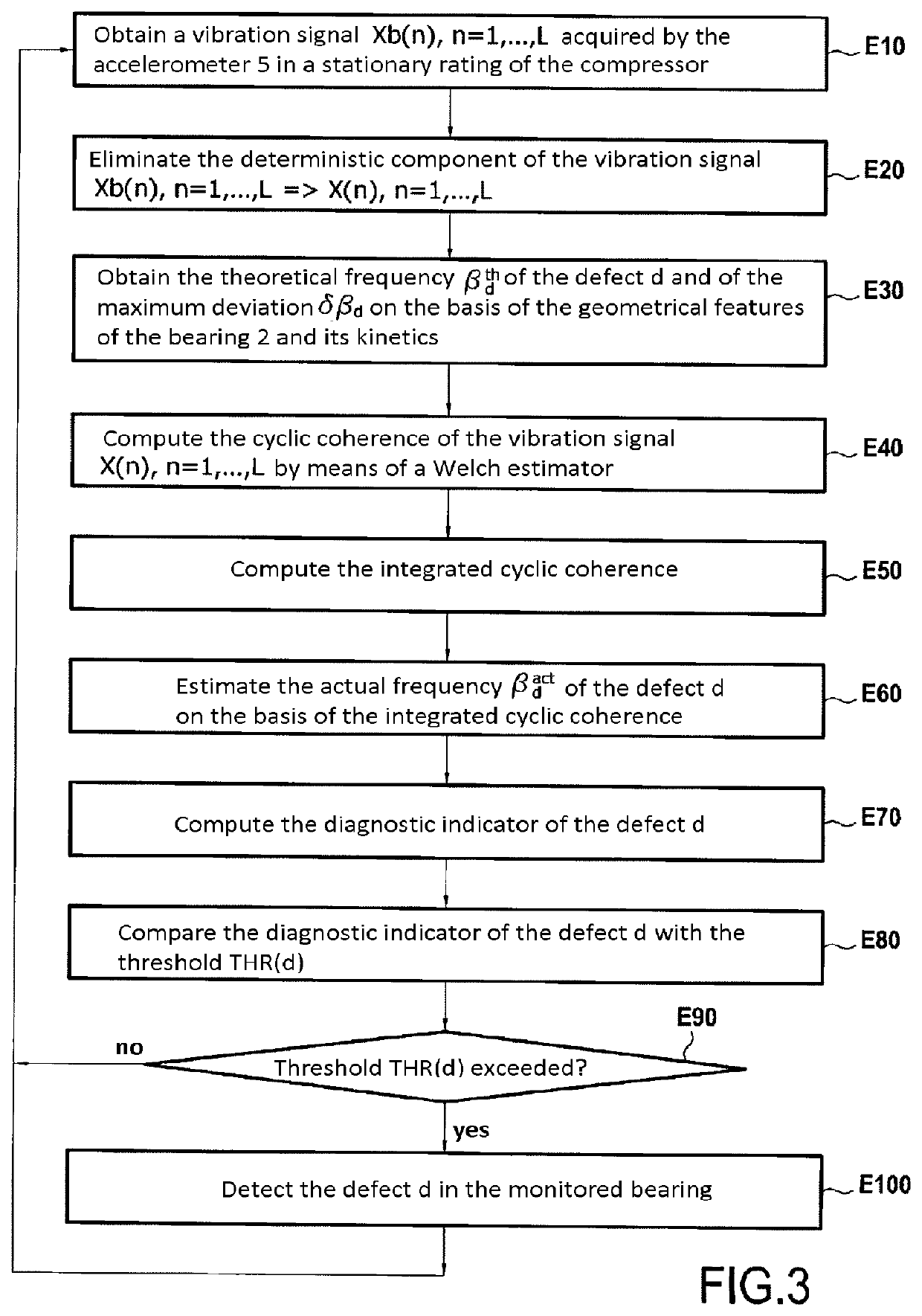Method and device for monitoring a bearing equipping a rotary device
a technology of a rotary device and a bearing, which is applied in the direction of machine parts testing, structural/machine measurement, instruments, etc., can solve the problems of untimely stopping of the machine in which it is used, untimely stopping of the current monitoring system implementing vibration analysis, and several practical difficulties, so as to improve the earliness of defect detection, reduce the effectiveness of estimation errors, and increase the estimating error marring the computed indicator
- Summary
- Abstract
- Description
- Claims
- Application Information
AI Technical Summary
Benefits of technology
Problems solved by technology
Method used
Image
Examples
Embodiment Construction
[0081]FIG. 1 shows, in its environment, a device 1 for monitoring a bearing 2 equipping a rotary mechanical device 3 in accordance with the invention in a particular embodiment.
[0082]In the example envisioned in FIG. 1, the bearing 2 is a ball bearing and the rotary device 3 equipped with this ball bearing is for example a compressor of a turbojet engine 4 in accordance with the invention. The bearing 2 is here assumed to permit the driving in rotation of a shaft of the compressor 3 of the turbojet engine 4 about a predefined axis of rotation.
[0083]This example is however given only by way of illustration, and the invention can also be applied to other contexts. Thus for example, the bearing 2 can be a roller bearing, the rotary device 3 can be any rotary mechanical device, an element of which is driven in rotation by means of the bearing 2, and other aircraft engines than a turbojet engine can be envisioned. The invention can also be applied to another context than the aeronautical...
PUM
 Login to View More
Login to View More Abstract
Description
Claims
Application Information
 Login to View More
Login to View More - R&D
- Intellectual Property
- Life Sciences
- Materials
- Tech Scout
- Unparalleled Data Quality
- Higher Quality Content
- 60% Fewer Hallucinations
Browse by: Latest US Patents, China's latest patents, Technical Efficacy Thesaurus, Application Domain, Technology Topic, Popular Technical Reports.
© 2025 PatSnap. All rights reserved.Legal|Privacy policy|Modern Slavery Act Transparency Statement|Sitemap|About US| Contact US: help@patsnap.com


